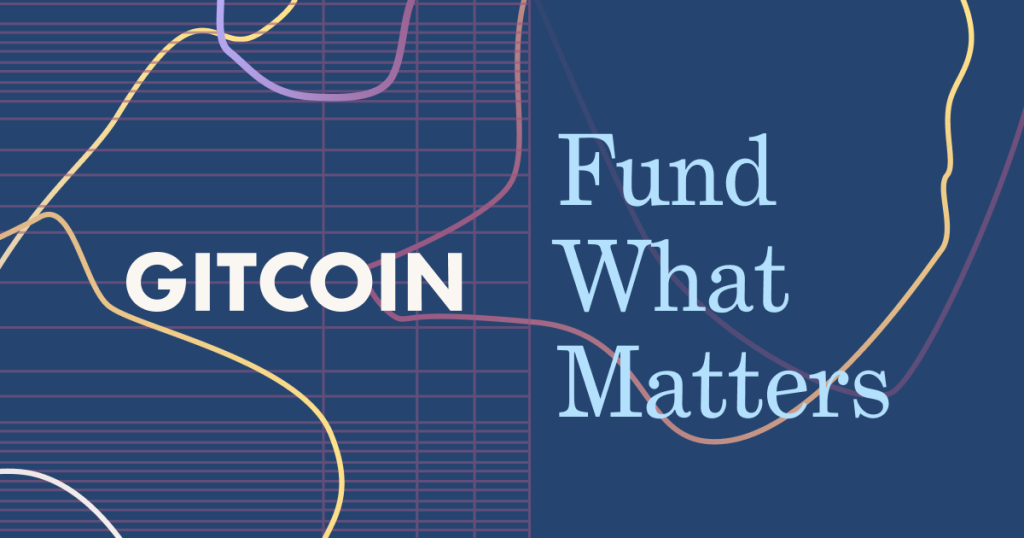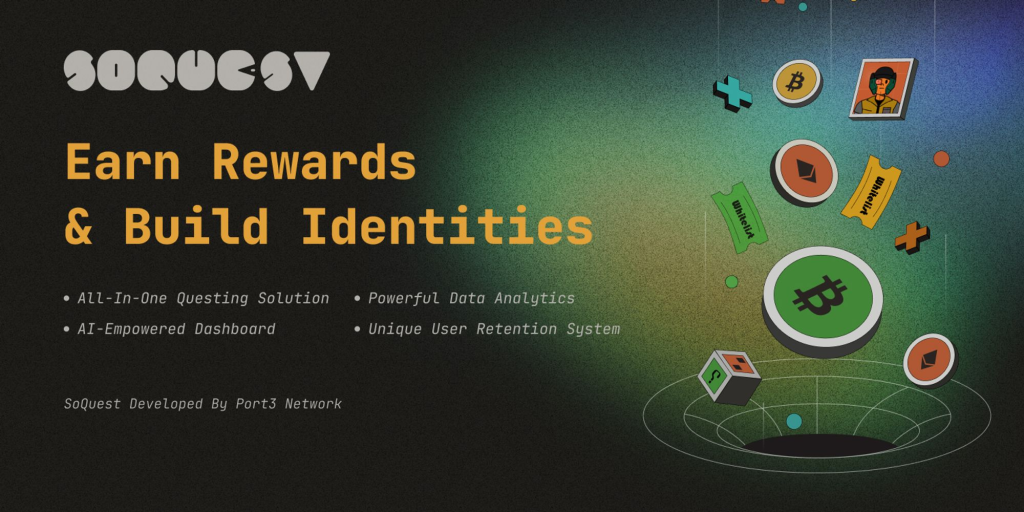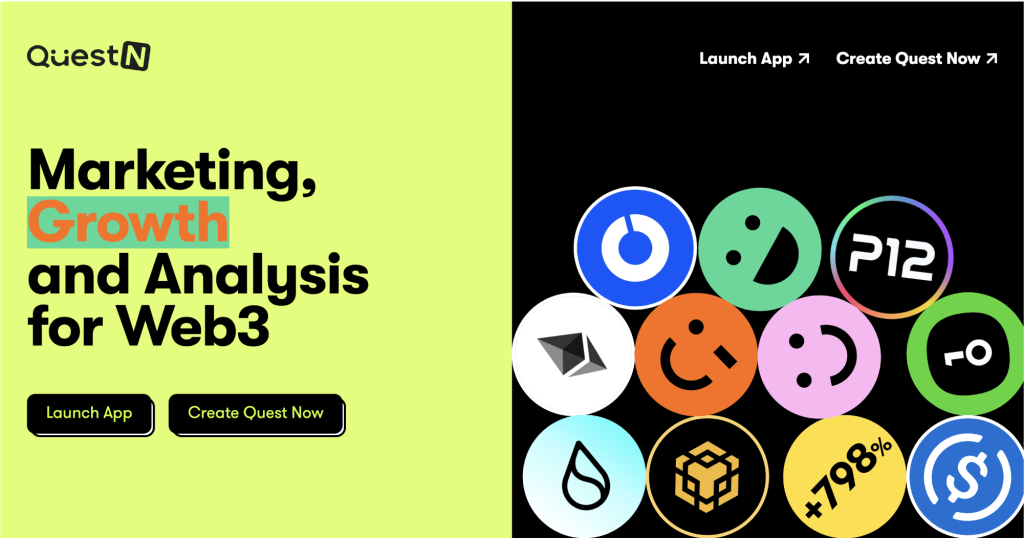Introduction to Web3 Quest Platforms
The web3 space is booming, with new projects launching constantly across chains like Ethereum, Polygon, and Solana. In this rapidly evolving ecosystem, distinguishing oneself amidst the cacophony of innovations is a formidable challenge. This is where web3 quest platforms come into play, offering a novel approach to community engagement and growth.
These platforms leverage the principles of gamification and blockchain technology to create a unique and engaging way for users to interact with web3 projects. By completing tasks, puzzles, and educational content, users can earn rewards, thereby fostering a deeper connection with the project. For developers and project owners, these platforms offer targeted strategies for user acquisition, retention, and engagement, setting the stage for a symbiotic relationship between projects and their communities.
Demystifying the Quest Platform Revolution
The genesis of web3 quest platforms can be traced back to the adaptation of gamification concepts within blockchain’s transparent and immutable framework. The idea was simple yet revolutionary: engage users with small, manageable tasks that educate, entertain, and reward, thereby creating a potent mechanism for community building and project promotion.
This concept quickly gained traction, leading to the establishment of several platforms that specialized in hosting quests. These platforms provided a diverse array of challenges, from social media engagements and content creation to complex problem-solving tasks. The rewards, often in the form of tokens, NFTs, and other digital assets, provided a tangible incentive for participation, while the educational content helped demystify the often complex world of blockchain and cryptocurrency.
One of the earliest adopters of this model was Gleam, a web2 social marketing platform that pivoted to address the burgeoning needs of the web3 community. This move signaled the beginning of a new era in digital marketing and community engagement, with quest platforms at the forefront. Today, these platforms are not just a novelty but a necessity, hosting millions of wallets and facilitating partnerships with high-profile projects.
The core appeal of quest platforms lies in their ability to cater to both projects and users effectively. For projects, they offer:
- Targeted User Acquisition: By tailoring quests to specific demographics, projects can attract and engage their ideal user base.
- Engagement Analytics: Data on completion rates and user engagement helps optimize future campaigns.
- Virality Tools: Features like referral programs encourage community growth through word-of-mouth.
- Marketing Automation: Seamless API integrations allow for the embedding of quests across various platforms.
For users, quest platforms provide:
- Educational Content: From the basics of blockchain to advanced trading strategies, users can learn at their own pace.
- Rewards: Participation is incentivized with digital assets, making learning profitable.
- Engagement: Interactive interfaces and progress tracking make the learning process fun and engaging.
- Community: Users can discover and contribute to projects, fostering a sense of belonging and contribution.
In the following sections, we will delve deeper into the key players in the quest platform space, explore strategic platform integrations, discuss optimization principles, and envision the future trajectory of web3 quest platforms.
Mainstream General Quest Platforms
In the diverse ecosystem of web3 quest platforms, several leaders have emerged, each with its unique approach to gamification and community engagement. These platforms have become the backbone of many projects’ growth strategies, catering to a wide range of needs from user education to protocol contribution.
Galxe

Galxe stands out as one of the largest and most versatile quest platforms in the web3 space. It offers an array of challenges, from NFT drops to token rewards for completing various tasks, including social engagements and educational challenges. With over 11 million registered IDs, Galxe is a hub for community activities, attracting a vast user base eager to participate in quests and earn rewards.
Tide

Tide specializes in the intersection of quests and analytics, providing projects with detailed insights into campaign performance. Its platform is designed to streamline the growth process for web3 projects through data-driven decisions. By offering granular metrics on daily active users (DAU) and other key performance indicators, Tide helps projects optimize their engagement strategies effectively.
Layer3

Layer3 targets the crypto-curious, especially beginners, guiding them through their first on-chain interactions. By focusing on education through quests, Layer3 demystifies the complex world of blockchains, decentralized exchanges (DEXs), and decentralized applications (dApps). Its approach not only fosters knowledge growth but also encourages network expansion.
RabbitHole

RabbitHole goes a step further by focusing on developing users’ skills and expertise through specialized quests. These quests are designed to validate users’ abilities in areas such as smart contract audits, thereby enabling them to contribute actively to protocols. RabbitHole’s model is pivotal in creating a knowledgeable and skilled community ready to support and grow the web3 ecosystem.
Zealy

Zealy focuses on enhancing user retention and community engagement through daily check-ins and loyalty rewards. Its quest-based model encourages continuous interaction with web3 projects, rewarding users for their ongoing participation. Zealy’s approach helps projects maintain an active and engaged user base, fostering long-term relationships and community growth.
LearnWeb3

LearnWeb3 is a comprehensive educational platform aimed at fostering a deeper understanding of Web3 technologies among developers. It enables protocols, startups, and other entities to create targeted courses that equip developers with the necessary skills to thrive in the Web3 ecosystem. Upon course completion, developers earn XP points, and the platform also offers custom rewards and bounties, encouraging further exploration and learning. Unlike traditional bug-bounty programs, LearnWeb3.io is focused on constructive learning rather than exploiting vulnerabilities.
Questbook

Questbook serves as a learning and development platform for aspiring blockchain developers. It provides structured pathways and quests focused on blockchain technology, smart contract development, and dApp creation. Questbook’s hands-on approach ensures that users not only gain theoretical knowledge but also practical experience, preparing them for real-world challenges in the web3 space.
Gitcoin

Gitcoin extends its platform to include educational quests. It’s known for connecting developers with open-source projects. These quests offer learning opportunities and challenges related to coding, blockchain development, and open-source contributions, providing a practical way for developers to enhance their skills while contributing to meaningful projects. Gitcoin’s model supports the growth of the open-source ecosystem and fosters a community of skilled contributors.
Guild

Guild revolutionizes community management by enabling the creation of blockchain-based communities with customizable membership criteria. It offers tools for managing memberships, gated content, and community quests, allowing projects to build highly engaged and dedicated user bases. Guild.xyz’s platform is ideal for projects looking to foster a sense of belonging and active participation among their community members.
Intract

Intract enhances the web3 user experience by incorporating interactive tasks and gamification elements directly into applications. It aims to boost user engagement and retention by making every interaction within web3 projects more rewarding and enjoyable. Interact’s platform is particularly effective for projects seeking to stand out through an innovative and engaging user interface.
SoQuest

SoQuest is a cutting-edge Web3 Quest platform that empowers projects to build vibrant communities and streamline project activities and information dissemination. With a robust user base of over 4 million and partnerships with 5,000+ projects, SoQuest supports an impressive range of public chains and wallets. Its standout features include Quest as a Service (QaaS), enabling quests to be directly embedded on websites for enhanced user engagement, and Blockchain Quest Language (BQL) for simplifying on-chain tasks. SoQuest’s comprehensive tools and features make it a go-to platform for projects aiming to foster active and engaged Web3 communities.
QuestN

QuestN is a dynamic quest-based platform that specializes in creating bespoke campaigns designed to enhance and complement existing promotional efforts. Unlike other platforms that may focus on continuous user engagement through standardized tasks, QuestN’s strength lies in its ability to launch one-off campaigns tailored to specific events or partnerships.
Philand

Philand offers an innovative approach to on-chain identity and activity visualization, rewarding users with NFTs based on their interactions with specific protocols. This platform gamifies on-chain activity, such as transactions on Uniswap, translating each action into NFT rewards that accumulate and are visually represented on a user’s virtual land. This not only serves as a unique form of engagement but also acts as a reputation mechanism within the Web3 space, showcasing an individual’s participation and contributions to various protocols.
Kazm

Kazm provides a no-code, white-label platform that facilitates tier-based quest interactions for protocols. Designed to be implemented post-initial traction, Kazm supports seamless integration into existing websites, offering features like dynamic NFTs. This solution is akin to a customizable version of Philand.xyz, allowing projects to engage their communities with branded quests and rewards directly on their platforms. Kazm’s versatility and ease of use make it an ideal choice for projects looking to enhance their user engagement strategies without extensive development resources.
WonderCommunities

Wonder Communities introduces a quest-based plugin specifically designed for Discord and Telegram communities, enabling users to engage with content, complete quests, and win rewards without ever leaving the server. This tool supports multiple integrations and offers various onboarding templates, making it incredibly versatile for community managers looking to gamify their Discord experience. Wonder Communities stands out by bringing the quest platform directly into the social spaces where communities already thrive, enhancing user engagement and participation within the familiar confines of Discord servers and Telegram groups.
GetReach

GetReach is streamlined, automated protocol designed to reward quality contributions within the Web3 community. Through its unique /Reach Scoring System (RSS), GetReach emphasizes rewarding efforts based on the relevance and quality of user interactions. The platform supports a dynamic ecosystem where projects can create missions to promote content, categorize them for targeted outreach, and incentivize participation with ETH rewards.
Notably, GetReach boasts an impressive engagement rate increase, underpinned by AI to ensure rewards are earned for higher quality interactions. This approach not only combats the prevalence of bots but also elevates the standard of community contributions. With features like effort-based engagement rewarding and the proprietary /Reach Protocol powered by $REACH tokens, GetReach is redefining the landscape of community engagement in Web3.
SesameLabs

SesameLabs empowers Web3 projects to directly engage and reward their communities with customized tasks and incentives. Specializing in personalized communication and rewards, it’s ideal for projects aiming to enhance direct interaction and loyalty among token holders.
WallApp

WallApp offers a seamless integration for projects looking to embed contribution quests and rewards into their ecosystems. With its user-friendly SDK, WallApp fits effortlessly into any project’s workflow, encouraging active community participation and contribution through an intuitive interface.
Each platform brings its unique approach to engaging users, fostering learning, and building communities within the Web3 space, offering tools and strategies tailored to the specific needs of projects and their audiences.
Strategic Platform Integrations
Choosing the right quest platform is crucial for a project’s success. Strategic alignment with a platform that complements a project’s goals and target audience can significantly amplify its impact. For instance:
- An NFT project might collaborate with Galxe for NFT drop quests, leveraging its large user base for maximum visibility.
- A DeFi protocol could utilize Tide’s analytics capabilities to track user engagement and optimize its quest-based marketing strategies.
- New blockchain users could be directed to Layer3 for introductory quests, ensuring they have a solid foundation before diving deeper into the ecosystem.
- Projects looking for skilled contributors might turn to RabbitHole to identify and engage users with specific expertise.
Key Optimization Principles
To maximize the benefits of web3 quest platforms, projects should adhere to several best practices:
- Promote Widely: Ensure that the quest campaigns are visible across all communication channels, including social media, newsletters, and community forums.
- Incentivize Effectively: Rewards should be meaningful and aligned with the project’s goals, such as exclusive access, governance rights, or unique NFTs.
- Analyze and Adapt: Continuously monitor campaign performance to identify what works best and refine future strategies accordingly.
- Automate for Efficiency: Leverage API integrations to automate tasks like reward distribution and task verification, streamlining operations and enhancing user experience.
The Future of Web3 Quest Platforms
As we look towards the future, web3 quest platforms are poised for significant evolution. We can anticipate:
- Cross-Reality Integrations: Quests will expand beyond traditional web interfaces into virtual worlds and metaverse environments, offering immersive experiences.
- Play-To-Contribute Models: Platforms will increasingly require users to demonstrate knowledge or skills to participate in ecosystem activities, promoting a more engaged and informed community.
- On-Chain Data Synergy: Advanced analytics will enable platforms to tailor quests more effectively to users’ interests and behaviors, enhancing personalization and engagement.
- User-Curated Rewards: Platforms may offer users the ability to customize rewards, creating a more personalized and engaging experience.
As web3 quest platforms continue to evolve, their role in connecting projects with communities will only grow in importance. By offering innovative, engaging, and educational experiences, these platforms are setting the stage for a more inclusive and dynamic web3 ecosystem.
